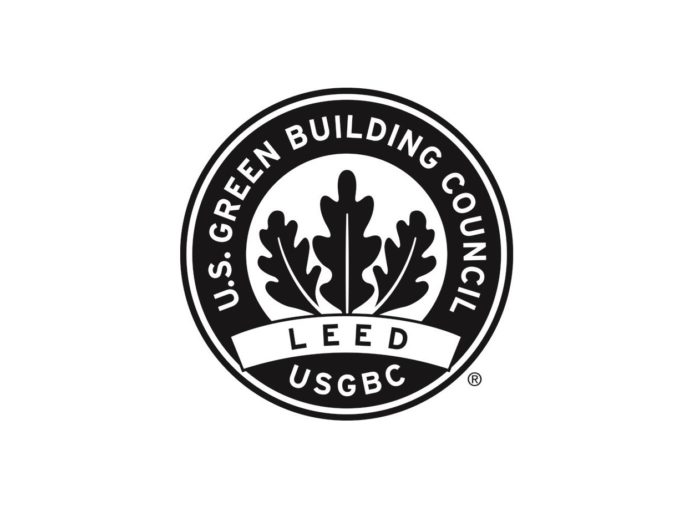Building certification label LEED
Find out more about LEED sustainability certification for buildings here.

Leadership in Energy & Environmental Design
The LEED (Leadership in Energy & Environmental Design) certification system of the U.S. Green Building Council (USGBC) is the world’s most widely used certification system for sustainable buildings. LEED certification is based on a holistic rating system that aims to make buildings more resilient to climate change, meet ESG requirements, protect the environment and improve the quality of life for users.
For which building types is LEED certification suitable?
- New Construction
- Core and Shell
- Schools
- Retail
- Data Centers
- Warehouses and Distribution Centers
- Hospitality
- Healthcare
Award criteria for LEED sustainability certification
The LEED criteria evaluate buildings in several categories. Sustainable location refers to the selection of building sites and the promotion of environmentally friendly means of transportation. Water efficiency aims to reduce water consumption and use innovative technologies. Energy and atmosphere focus on increasing energy efficiency, using renewable energies and reducing greenhouse gas emissions. Materials and resources relate to the use of sustainable building materials and efficient waste management. Indoor quality improves air quality and natural light for a healthy indoor climate. Innovation and design promote innovative approaches and design solutions. These criteria contribute to the creation of more environmentally friendly and healthier buildings.
- Integrative Process
- Location and Transportation
- Sustainable Sites
- Water Efficiency
- Energy and Atmosphere
- Materials and Resources
- Indoor Environmental Quality
- Innovation
- Regional Priority
LEED® : Certification body
Costs for LEED certification
The cost of LEED certification varies depending on project size, building type and USGBC membership status. Typical cost components are
- Registration fee: $1,200 for members, $1,500 for non-members.
- Certification fee: Dependent on the gross floor area (GFA) of the project.
- For members: $0.045 per square foot (minimum $2,250)
- For non-members: $0.055 per square foot (minimum $2,750)
Is LEED certification mandatory?
LEED certification is a voluntary measure that building owners and project developers can choose to evaluate and demonstrate the sustainability and environmental performance of their buildings.
Recognition of LEED sustainability certification for certification system
LEED sustainability certification is internationally recognized and is compatible with several other certification systems. It is often regarded as equivalent or complementary to other well-known certification systems such as BREEAM and DGNB. Cooperation and agreements, such as the “Crosswalk” agreement between LEED and DGNB, facilitate the mutual recognition and compatibility of the standards.
Source: LEED rating system | U.S. Green Building Council (usgbc.org)


